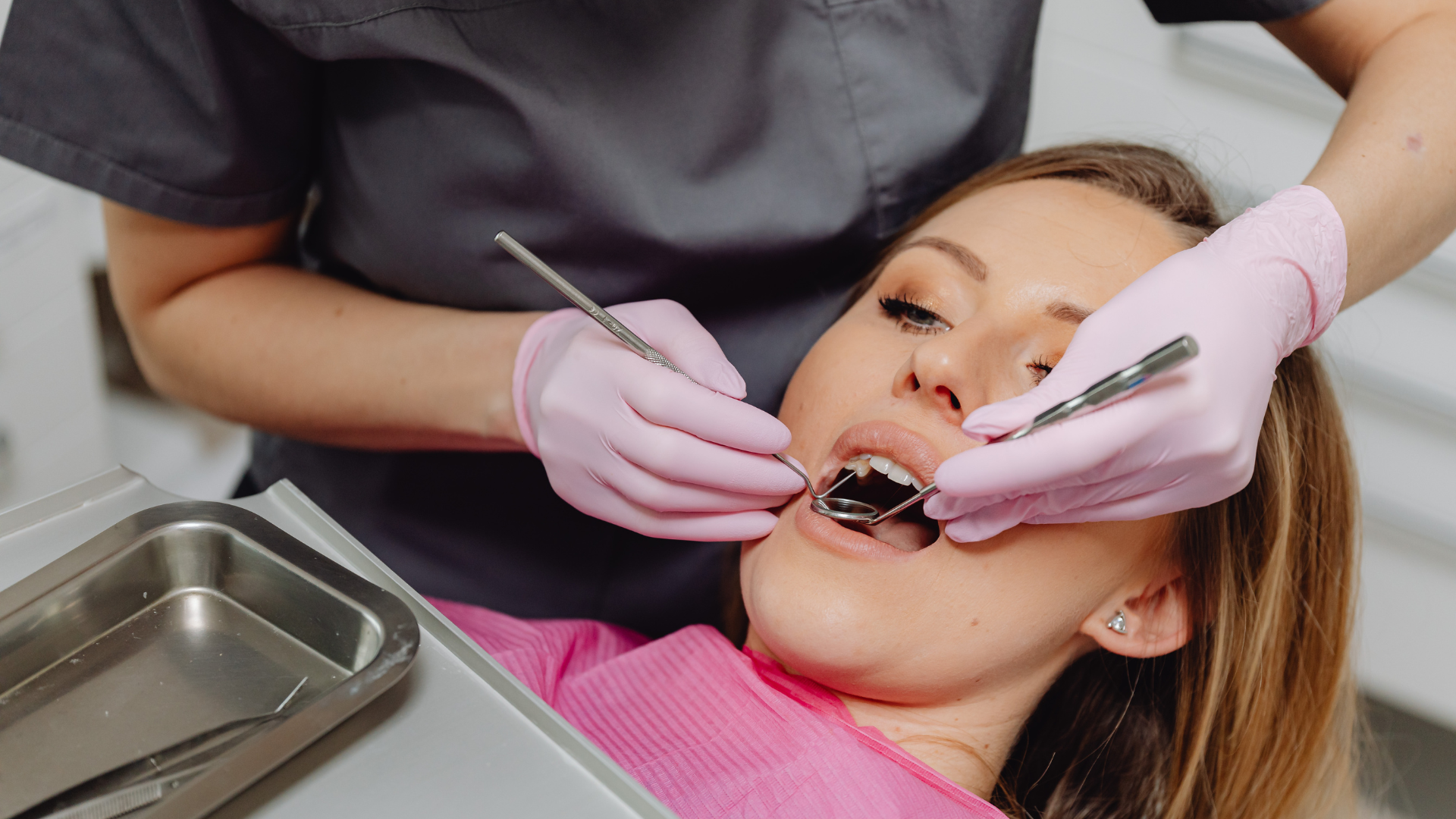Understanding Tooth Abscess: Symptoms, Causes, and Effective Treatments

A tooth abscess is a painful dental condition that arises when a bacterial infection leads to a pocket of pus forming in or around a tooth. This serious issue often results from untreated tooth infections, escalating into severe complications if not addressed promptly. Recognizing the symptoms of a tooth abscess, such as intense tooth pain, swelling, and sensitivity, is crucial for seeking timely treatment and preventing further health issues.
At Danforth Neighbourhood Dental Centre in Toronto, Ontario, we emphasize the importance of professional dental care in effectively managing and treating tooth infections. Our experienced team is dedicated to providing comprehensive care to ensure your oral health and well-being.
What is a Tooth Abscess?
A tooth abscess is a severe dental condition characterized by a localized collection of pus caused by a bacterial infection. This infection typically originates from the inner parts of the tooth or surrounding tissues, leading to significant pain and discomfort. A tooth abscess is often the result of an untreated tooth infection, which can stem from cavities, gum disease, or dental trauma.
There are three primary types of tooth abscesses:
- Periapical Abscess: This type forms at the tip of the tooth root and is usually caused by an infection that spreads from a dental cavity into the tooth pulp.
- Periodontal Abscess: This type occurs in the gums and bone supporting the tooth, often resulting from severe gum disease.
- Gingival Abscess: This type is located in the gum tissue and is typically caused by foreign objects, such as food particles, getting trapped in the gums.
Understanding these types of abscesses can help identify the symptoms and seek appropriate treatment.
Symptoms of a Tooth Abscess
A tooth abscess can manifest through various symptoms, which often indicate the severity and type of the infection. Common symptoms include:
- Severe Tooth Pain: The most noticeable symptom is intense, throbbing pain in the affected tooth or surrounding area. This pain may radiate to the jaw, neck, or ear.
- Sensitivity to Hot and Cold: Increased sensitivity when consuming hot or cold foods and beverages can be an early indicator of a tooth abscess.
- Swelling: Swelling in the face, cheek, or neck area is common and can be a sign of spreading infection.
- Fever: A tooth abscess may accompany a high temperature, which indicates that the body is fighting off the infection.
- Red, Swollen Gums: The gums around the affected tooth may become red, swollen, and tender.
- Bad Breath and Unpleasant Taste: The presence of pus can cause a foul smell or taste in the mouth.
- Difficulty Swallowing or Breathing: In severe cases, the swelling can obstruct airways, making it hard to swallow or breathe.
The symptoms can vary based on the type and severity of the abscess. For instance, a periapical abscess usually causes severe tooth pain and sensitivity, while a periodontal abscess may primarily result in swollen gums and tenderness.
Recognizing these symptoms early and seeking prompt dental care from professionals, such as those at Danforth Neighbourhood Dental Centre in Toronto, Ontario, is crucial for effective treatment and preventing further complications.
Causes of Tooth Abscess
A tooth abscess typically develops from a bacterial infection within the tooth or surrounding tissues. Understanding the primary causes and risk factors can help prevent this painful condition.
Primary Causes
- Untreated Dental Cavities: When cavities are not treated, bacteria can penetrate deep into the tooth, reaching the pulp and causing an infection that may lead to an abscess.
- Gum Disease: Severe gum disease (periodontitis) can cause the gums to pull away from the teeth, creating pockets where bacteria can accumulate and form an abscess.
- Dental Trauma: Injuries to the teeth, such as cracks or fractures, can allow bacteria to enter the tooth and cause an infection.
Risk Factors
- Poor Oral Hygiene: Inadequate brushing and flossing can lead to plaque and bacteria buildup, increasing the risk of cavities and gum disease.
- High Sugar Diet: Consuming a diet high in sugar can promote tooth decay, as sugar feeds the bacteria that cause cavities.
- Dry Mouth: Conditions that reduce saliva production, such as certain medications or medical conditions, can increase the risk of dental infections. Saliva helps to wash away food particles and bacteria.
By understanding these causes and risk factors, individuals can take proactive steps to maintain their oral health and prevent tooth abscesses. Regular dental check-ups at Danforth Neighbourhood Dental Centre in Toronto, Ontario, play a crucial role in early detection and management of potential dental issues.
Diagnosing a Tooth Abscess
Diagnosing a tooth abscess involves a thorough examination by a dentist to identify the presence and severity of the infection. Danforth Neighbourhood Dental Centre uses several methods to ensure accurate diagnosis and effective treatment.
Methods Used for Diagnosis
- Dental Examination: The dentist will comprehensively examine the mouth, teeth, and gums, checking for signs of swelling, redness, and tenderness in the affected area.
- X-rays: Dental X-rays are a crucial tool in diagnosing a tooth abscess. They help the dentist see the extent of the infection and determine if it has spread to surrounding tissues or bone.
- Percussion Test: The dentist may gently tap on the affected tooth to assess pain levels and locate the source of the infection.
- Thermal Testing: Sensitivity to hot or cold stimuli can help identify the affected tooth and the condition of the tooth pulp.
Importance of Early Diagnosis
Early diagnosis of a tooth abscess is vital to prevent complications. If left untreated, the infection can spread to other parts of the body, leading to more severe health issues such as:
- Bone Loss: The infection can spread to the jawbone, causing significant damage.
- Sinus Infections: The infection can spread to the sinuses of the upper teeth.
- Systemic Infections: In rare cases, the infection can enter the bloodstream, leading to a life-threatening condition called sepsis.
By diagnosing a tooth abscess early, DNDC
general dentistry dentists can provide timely treatment to alleviate pain, eliminate the infection, and prevent further complications.
Treatment Options for a Tooth Abscess
Treating a tooth abscess requires combining immediate and long-term solutions to eliminate the infection and prevent further complications. Danforth Neighbourhood Dental centre offers comprehensive care to ensure effective treatment and lasting relief.
Immediate Treatments
- Draining the Abscess: The dentist will make a small incision in the abscess to drain the pus, which helps reduce pain and remove the infection. This procedure is usually done under local anesthesia.
- Antibiotics: Antibiotics may be prescribed to combat the bacterial infection. These medications help eliminate the remaining bacteria and prevent the infection from spreading.
Long-term Solutions
- Root Canal Therapy: This procedure involves removing the infected pulp from inside the tooth, cleaning and disinfecting the root canals, and then filling and sealing them. Root canal therapy can save the tooth and prevent further infection.
- Tooth Extraction: Extraction may be necessary if the tooth is severely damaged and cannot be saved. Removing the infected tooth helps prevent the spread of infection and allows the area to heal.
Pain Management and Home Care Tips
- Over-the-Counter Pain Relievers: Medications such as ibuprofen or acetaminophen can help manage pain and reduce inflammation.
- Warm Saltwater Rinse: Rinsing the mouth with warm salt water several times daily can help reduce swelling and promote healing.
- Cold Compress: Applying a cold compress to the outside of the cheek can help numb the area and reduce swelling.
- Good Oral Hygiene: Brushing and flossing regularly and using an antiseptic mouthwash can help maintain oral health and prevent further infections.
At
Danforth Neighbourhood Dental Centre, we emphasize the importance of professional dental care in treating tooth abscesses effectively. Our team is dedicated to providing personalized treatment plans to address each patient's unique needs.
Preventing Tooth Abscesses
Preventing tooth abscesses involves maintaining excellent oral hygiene and addressing dental issues promptly. Here are some essential tips to help avoid tooth infections and abscesses:
Good Oral Hygiene
Regular Brushing and Flossing: Brush your teeth at least twice daily with fluoride toothpaste and floss daily to remove plaque and food particles between teeth.
Routine Dental Check-ups: Schedule regular visits to Rolling Hills Dental for professional cleanings and examinations to catch and address potential issues early.
Dietary Recommendations
- Limit Sugar Intake: Reduce the consumption of sugary foods and drinks that can lead to cavities and gum disease.
- Eat a Balanced Diet: Include foods rich in vitamins and minerals, such as fruits, vegetables, and dairy products, to promote healthy teeth and gums.
- Stay Hydrated: Drink plenty of water to help wash away food particles and bacteria and to maintain saliva production, which protects against tooth decay.
Promptly Address Dental Issues
- Treat Cavities and Gum Disease Early: Seek prompt treatment for cavities and gum disease to prevent the development of abscesses. https://www.dndc.ca/restorative-dentistry
- Avoid Dental Trauma: Protect your teeth from injury by wearing a mouthguard during sports and avoiding using your teeth to open packages.
When to See a Dentist
Recognizing the signs of a tooth abscess and seeking urgent dental care is crucial to prevent severe complications. Here are some indicators that you need to visit a dentist immediately:
Signs for Urgent Dental Care
- Severe Tooth Pain: Persistent, throbbing pain in a tooth or the surrounding area.
- Swelling and Redness: Noticeable facial, cheek, or gums swelling and redness around the affected area.
- Fever: A high temperature that accompanies dental pain.
- Difficulty Swallowing or Breathing: Swelling that makes it hard to swallow or breathe requires immediate attention.
- Pus Drainage: Pus or foul-smelling discharge in the mouth is a clear sign of infection.
Potential Complications
- Spread of Infection: Untreated tooth infections can spread to other body parts, leading to serious health issues such as jawbone damage, sinus infections, or sepsis.
- Tooth Loss: Advanced abscesses can result in the loss of the affected tooth.
Conclusion
Tooth abscesses are serious dental conditions that require prompt attention and professional treatment. Recognizing the symptoms and understanding the importance of early intervention can prevent severe complications.
Danforth Neighbourhood Dental Centre is committed to providing comprehensive care to treat and prevent tooth abscesses. Regular dental check-ups and good oral hygiene practices are essential in maintaining oral health and preventing infections.
If you experience tooth abscess symptoms, don't hesitate to seek professional dental care at Danforth Neighbourhood Dental Centre. Your oral health is our priority, and we are here to help you maintain a healthy, pain-free smile.




